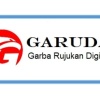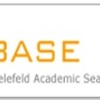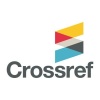Pengembangan e-modul interaktif berbasis strategi heuristik vee untuk melatih kemampuan literasi numerasi siswa
Abstract
Abstract: An interactive e-modul interaktife is a module in the form of a combination of two or more media (audio, text, graphics, images, animation and video) that are interactive, to convey a material, method, boundaries, and learning evaluation that is systematically designed and interesting, which can then cause a two-way relationship between the e-modul interaktife and its users. The interactive e-modul interaktife given to students must be a good and quality e-modul interaktife. Quality e-modul interaktifes can build, trigger, strengthen students' interest in learning independently and the learning process is more effective, efficient so that there is an improvement in the quality of learning. For this reason, the purpose of this research is to produce an interactive e-modul interaktife based on a valid, practical and effective heuristic strategy to train students' numeracy literacy skills, with the material used is geometry transformation. This type of research research is a development research (R&D) with a 4-D design of defining (Define), design (Design), development (Development), and dissemination (Dissemination). The subjects of this study were class XI mipa students of Al-Qudwah Integrated High School which totaled 21 students. The type of data taken is in the form of quantitative data and qualitative data, qualitative data in this study were collected using expert validity questionnaires, student response questionnaires, and quantitative data in this study were taken from numeracy literacy test instruments. Based on the results of the analysis obtained an average total validation (RTV) score from media experts 4.49 with very valid categories, material experts 4.56 with very valid categories, educational experts 4.65 with very valid categories, user response percentage 83%, this indicates that student responses to learning using interactive e-modul interaktifes based on heuristic strategies are of positive value, so that interactive e-modul interaktifes can be declared practical. Students' numeracy literacy skills after using this interactive e-modul interaktife based on heuristic strategies got a total average of 2.98 with excellent categories. Based on the results of the data analysis, it can be concluded that the interactive e-modul interaktife based on the vee heuristic strategy developed is suitable for use as an effective learning resource to train students' numeracy literacy skills on the topic of geometric transformation. This e-modul interaktife makes it easy for students to access flexible learning resources anywhere and anytime
References
Amaliyah AR, R., & Mahmud, N. (2018). Analisis kemampuan representasi matematis dalam pemecahan masalah geometri serta faktor-faktor yang mempengaruhinya. Jurnal Review Pembelajaran Matematika, 3(2), 146–160. https://doi.org/10.15642/jrpm.2018.3.2.146-160
Cecep, C., Mutaqin, A., & Pamungkas, A. S. (2019). Pengembangan modul quick math berbasis mobile learning sebagai penunjang pembelajaran matematika di SMA. Prisma Sains : Jurnal Pengkajian Ilmu Dan Pembelajaran Matematika Dan IPA IKIP Mataram, 7(2), 148. https://doi.org/10.33394/j-ps.v0i0.1761
Dudung, A. (2018). Kompetensi profesional guru. JKKP (Jurnal Kesejahteraan Keluarga Dan Pendidikan), 5(1), 9–19. https://doi.org/10.21009/jkkp.051.02
Dwirahayu, G., & Nursida. (2016). Mengembangkan pembelajaran matematika dengan menggunakan metode permainan untuk siswa kelas 1 MI. Jurnal Matematika Dan Pendidikan Matematika, 5(2), 117–138.
Eliana, E., Nindiasari, H., & Santosa, C. A. H. F. (2021). Development of E-Learning Teaching Materials on Matrices Based on Cognitive Load Theory. Prima: Jurnal Pendidikan Matematika, 5(1), 47. https://doi.org/10.31000/prima.v5i1.2997
Fitri, A. (2021). Pengembangan handout berbasis model pembelajaran pembangkit argumen untuk melatih kemampuan berpikir logis matematis. UIN Syarif Hidayatullah.
Gina, N. M., Jusniani, N., & Budiman, H. (2021). Mathematical Representation Ability of Junior High School Students on Surface Area of Cube and Cuboid. Prima: Jurnal Pendidikan Matematika, 5(1), 72. https://doi.org/10.31000/prima.v5i1.2769
Huwana, E. (2020). Pengembangan e-modul interaktif pembelajaran matematika berbasis pendekatan kontekstual pada siswa kelas VII SMP Negeri 5 Salatiga kecamatan sidomukti kota Salatiga tahun pelajaran 2020/2021. IAIN Salatiga.
Islahiyah, I., Pujiastuti, H., & Mutaqin, A. (2021). Analisis kebutuhan e-modul interaktif dengan model pembelajaran berbasis masalah pada materi barisan dan deret kelas XI SMA. TIRTAMATH: Jurnal Penelitian Dan Pengajaran Matematika, 3(1), 47. https://doi.org/10.48181/tirtamath.v3i1.11135
Khairiyah, U., & Faizah, S. N. (2019). The effectiveness of using the islamic integration module on the critical thinking ability of madrasah ibtidaiyah students. Prisma Sains : Jurnal Pengkajian Ilmu Dan Pembelajaran Matematika Dan IPA IKIP Mataram, 7(2), 180. https://doi.org/10.33394/j-ps.v7i2.1780
Lestari, H., Pamungkas, A. S., & Alamsyah, T. P. (2019). Pengembangan lembar kerja siswa eksploratif berkonteks budaya banten pada mata pelajaran natematika di sekolah dasar. Prisma Sains : Jurnal Pengkajian Ilmu Dan Pembelajaran Matematika Dan IPA IKIP Mataram, 7(1), 48. https://doi.org/10.33394/j-ps.v0i0.1401
Murdikah, A. (2016). Pengaruh strategi heuristik vee terhadap kemampuan representasi matematis siswa. Universitas Muhammadiyah Tangerang.
Nelson, G., Jitendra, A. K., Nelson, G., Pulles, S. M., Kiss, A. J., & Houseworth, J. (2016). Is mathematical representation of problems an evidence-based Is mathematical representation of problems an evidence-based strategy for students with mathematics difficulties ? Exceptional Children, 83 (1)(August 2018). https://doi.org/10.1177/0014402915625062
Putra, L. V., Purwanti, K. Y., & Khoiriyah, I. S. A. (2018). Pembelajaran Matematika Model Tutor Sebaya Dengan Strategi Heuristik VEE. JANACITTA: Journal of Primary and Children’s Education, 1(2), 2615–6598. http://jurnal.unw.ac.id/index.php/janacitta
Rahmadian, N., Mulyono, & Isnarto. (2019). Kemampuan representasi matematis dalam model pembelajaran somatic, auditory, visualization, intellectually (SAVI). PRISMA, Prosiding Seminar Nasional Matematika, 2, 287–292. https://journal.unnes.ac.id/sju/index.php/prisma/article/view/28940
Safitri, W. Y., Retnawati, H., & Rofiki, I. (2020). Pengembangan film animasi aritmetika sosial berbasis ekonomi syariah untuk meningkatkan minat belajar siswa MTs. Jurnal Riset Pendidikan Matematika, 7(2), 195–209.
Solehah, E. E. H. (2015). Pengaruh e-modul interaktife berbasis contextual teaching and learning ( CTL ) terhadap hasil belajar siswa pada konsep fluida statis. UIN Syarif Hidayatullah.
Suhyanto, O., & Musyrifah, E. (2016). Pengaruh strategi heuristik vee terhadap kemampuan pemahaman konsep matematik. FIBONACCI Jurnal Pendidikan Matematika & Matematika, 2, 40–57.
Susilo, A., Siswandari, & Bandi. (2016). Pengembangan modul berbasis pembelajaran saintifik untuk peningkatan kemampuan mencipta siswa dalam proses pembelajaran akuntansi siswa kelas XII SMAN 1 Slogohimo 2014. Jurnal Pendidikan Ilmu Sosial, 26(1), 50–56.
Utari, T., & Hartono, H. (2019). Muatan penalaran dan pembuktian matematis pada buku teks matematika SMA kelas X Kurikulum 2013. Jurnal Riset Pendidikan Matematika, 6(1), 1–13.
Wulan, E. R., & Rosidah, N. I. (2020). Bagaimana problem solving geometri ruang dari level berpikir van hiele siswa? Lentera Sriwijaya : Jurnal Ilmiah Pendidikan Matematika, 2(1), 22–40. https://doi.org/10.36706/jls.v2i1.11442
DOI: http://dx.doi.org/10.48181/tirtamath.v4i1.16326
Refbacks
- There are currently no refbacks.
Copyright (c) 2022 TIRTAMATH: Jurnal Penelitian dan Pengajaran Matematika
Ciptaan disebarluaskan di bawah Lisensi Creative Commons Atribusi 4.0 Internasional .
Tirtamath: Jurnal Penelitian dan Pengajaran Matematika. Jurnal ini diterbitkan oleh Program Studi Magister Pendidikan Matematika Universitas Sultan Ageng Tirtayasa (cetak) dan Jurnal Untirta (eprint).
Alamat Penerbit: Program Studi Magister Pendidikan Matematika Kampus FKIP Untirta Jl. Ciwaru Raya, Cipare, Kec. Serang, Kota Serang, Banten 42117, Email: [email protected] |Klik untuk mengakses: Tirtamath: Jurnal Penelitian dan Pengajaran Matematika






